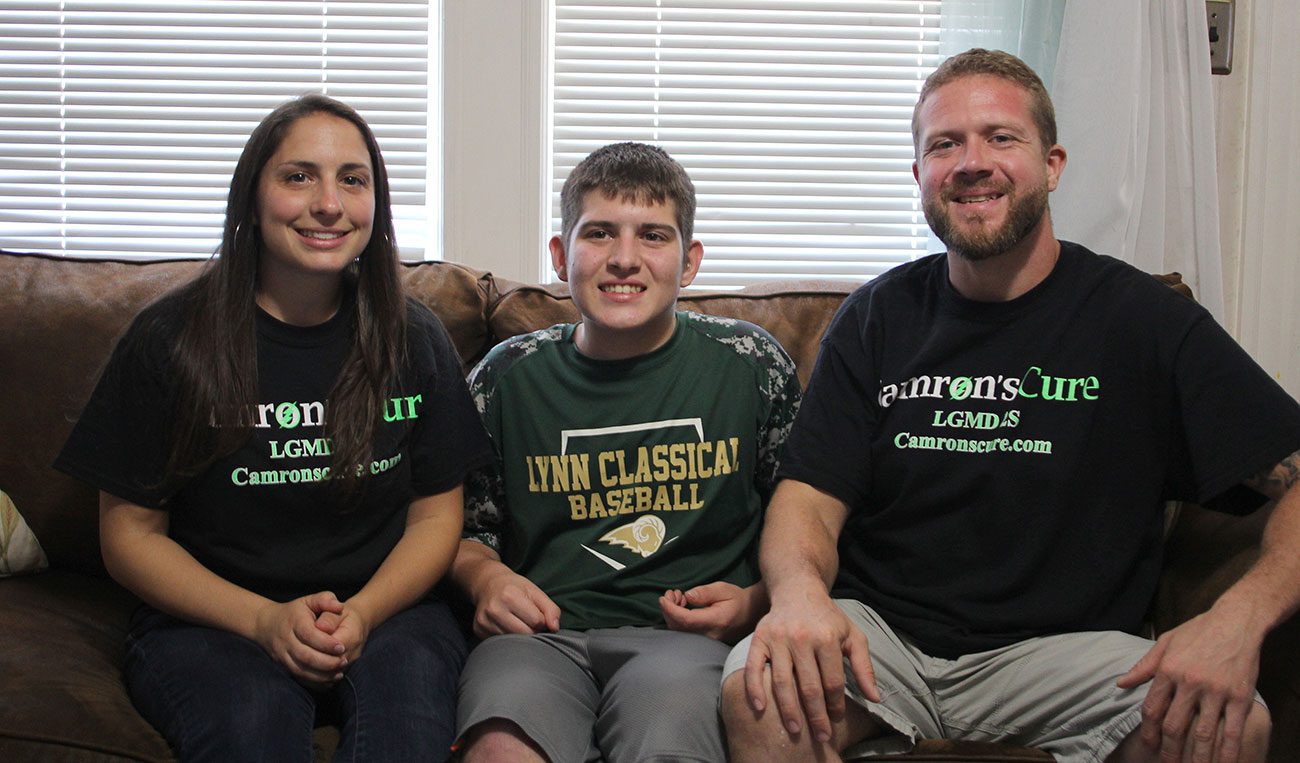LYNN — Jessica Gerardo and Mike Lawrence knew there were some issues involving their son, Cameron, from the time he was 3 years old.
“We could see there were muscle developmental delays with him,” said Gerardo, who lives in Lynn. “He was just different from other children his age.”
In the beginning, there were hearing difficulties, and the couple sent Cameron to specialists to treat that. But other things began to crop up.
He was, at different times, diagnosed with autism, then with non-verbal learning disabilities.
“There was a long time,” Gerardo said, “where we didn’t know what it was.”
But there was no denying that something was wrong. And when, at the age of 13, she noticed that Cameron was lifting his legs with his arms to get into cars, she went to his doctor, who suggested physical therapy. That began a long period of both physical and occupational therapy, trips to neurologists, blood tests and brain scans. All of them yielded results the couple already knew: there were issues concerning Cameron that were not normal.
Diagnoses such as muscular dystrophy were mentioned. But after another round of genetic tests, a definitive diagnosis was finally reached. Cameron had a condition known as Limb Girdle Muscular Dystrophy, and that both parents carried the recessive gene. The term encompasses a group of diseases that cause weakness and wasting of the muscles in the arms and legs. Most affected are those closest to the trunk of the body, such as shoulders, upper arms, pelvic area and thighs.
Cameron’s specific type of LGMD is 2S — one of a large number of variations of the condition.
“At the time,” Gerardo said, “the neurologists didn’t know anyone in the U.S. who had the disease, and a few people in the Middle East. It’s an extremely rare disease.
“It was determined that both Mike and I are carriers.”
They found a Facebook group for Cameron’s specific condition and saw that three people other than their son had the disease, which slowly progresses over time.
“We thought it would be better knowing,” Gerardo said. “But finding out, and finding out that there’s nothing we can do — it just provided a different kind of angst.”
For now, physical therapy is a constant part of Cameron’s life. He’ll undergo therapy for a spell, then stop so his body can catch up with the exercises, and then pick it up again.
Learning how to cope with it, though, is a different story. And for that, Gerardo and Lawrence found help from an unlikely source: The Lynn Classical baseball team.
“We chose to send him to Classical because we liked what the school had to offer,” she said. “He’s always liked baseball, and said that he’d like to be the team manager.”
Gerardo got in touch with Classical baseball coach Mike Zukowski, who, she said, went out of his way to help the boy.
“He was still in the eighth grade last year, and Mike said for him to come over and be with the team. The kids were so great to him. Cameron is a happy-go-lucky kid, other than this, and he loves baseball. Those kids made him love every second of his experience. He’d go to the games and because they knew he had to stretch, they’d be like, ‘come on, Cam, time to stretch’. And they’d all stretch with him. It was one of the most amazing things. He felt like he was part of that team.”
He was invited to the team dinner, Gerardo said, where Zukowski and the team gave him a Classical hoodie. They even put him on the roster as the team manager for the (Nipper) Clancy tournament.”
Of course, money is a constant concern, and toward that end, Gerardo and Lawrence will run a function, “Cameron’s Cure” on Friday, Sept. 28, at the Knights of Columbus hall on Lynnfield Street from 7-11 p.m., with a disc jockey, buffet and raffles.
“The money will go to helping research on gene therapy,” Gerardo said. “Right now, we’re concerned with growing our foundation (to help treat and perhaps eradicate LGMD). Cameron is a very special boy.”

